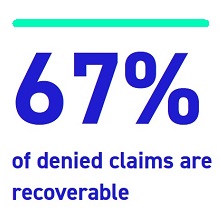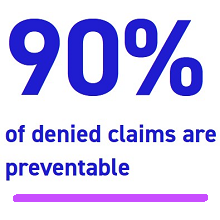Construction of a Successful Coding Appeal ArgumentPosted on June 26, 2020 Construction of a Successful Coding Appeal Argument When formulating an appeal, the justification should be clear and concise. Without a valid and persuasive argument, the denial may continue to be upheld. Address specifically how the payer is incorrect. The coding may be appropriate for numerous reasons; however, the focus of the appeal should be based on refuting points made by the payer. Example Payer Rationale: “Significant resources were not utilized, and therefore we are removing the secondary diagnosis of X.” The word “significant” is subjective, and one that does not align with coding guidelines. “The UHDDS item #11-b defines Other Diagnoses as “all conditions that coexist at the time of admission, that develop subsequently, or that affect the treatment received and/or the length of stay. For reporting purposes, the definition for “other diagnoses” is interpreted as additional conditions that affect patient care in terms of requiring clinical evaluation, therapeutic treatment, diagnostic procedures, extended length of hospital stay, or increased nursing care and/or monitoring”. Nowhere above says the additional resources must be of a certain amount. Respectfully point this out. Attach supporting documentation and reference how the documentation met the criteria for a reportable secondary diagnosis. Include additional references to support the coding. A general rule of thumb is the more support provided, the better the chance of an overturn. However, consider not using excessive or unnecessary information. Sometimes too much information can take away from the appeal. Always verify the references used by the payer. Make sure the payer has not misrepresented the references. When the references are accurate, verify that they were appropriate for the claim under review. For example, the payer denies two codes stating there is an Excludes 1 note by codes X and Y, and therefore, the payer is removing code X. That may be an accurate statement. However, upon review of the medical record, the provider identified these two conditions were unrelated. See below regarding the ICD-10-CM Official Guidelines for Coding and Reporting for Conventions in ICD-10-CM. “The ICD-10-CM has two types of excludes notes. Each type of note has a different definition for use but they are all similar in that they indicate that codes excluded from each other are independent of each other. A type 1 Excludes note is a pure excludes note. It means “NOT CODED HERE!” An Excludes1 note indicates that the code excluded should never be used at the same time as the code above the Excludes 1 note. An Excludes 1 is used when two conditions cannot occur together, such as a congenital form versus an acquired form of the same condition. An exception to the Excludes 1 definition is the circumstance when the two conditions are unrelated to each other. If it is not clear whether the two conditions involving an Excludes 1 note are related or not, query the provider. For example, code F45.8, Other somatoform disorders, has an Excludes 1 note for “sleep related teeth grinding (G47.63),” because “teeth grinding” is an inclusion term under F45.8. Only one of these two codes should be assigned for teeth grinding. However, psychogenic dysmenorrhea is also an inclusion term under F45.8, and a patient could have both this condition and sleep related teeth grinding. In this case, the two conditions are clearly unrelated to each other, and so it would be appropriate to report F45.8 and G47.63 together.” This exception should be pointed out in the appeal while referencing where the documentation appears in the medical record. Another example would be the use of an AHA (American Hospital Association) Coding Clinic reference which indicates a specific way to code such a scenario. The Coding Clinic may be an accurate reference, but if it was published after the dates of service for claim under review, it’s not an inappropriate reason for denial. In conclusion, these are just a couple of examples, but the take away is to be very specific in regards to what the payer is denying. Be clear and to the point in the appeal. Address every point that the payer makes. When the payer offers no rationale, point that out in the appeal along with very specific reasons why the billing was correct. Again, include appropriate references and documentation to support the argument. Keep in mind the examples above to not make similar mistakes. Coding references used by payers for inpatient denials should be based on Coding Guidelines and AHA Coding Clinics. Denials issued by payers for outpatient claims should be based on Coding Guidelines and CPT Assistant. |




